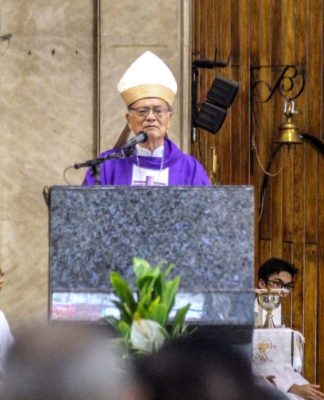IN WHAT was yet another giant leap for mankind, science rover Curiosity landed on Mars last August 5. And part of its success could be attributed to Lloyd Manglapus, who took up mathematics in UST.
Manglapus, a 42-year-old senior software engineer at the National Aeronautics and Space Administration Jet Propulsion Laboratory (NASA-JPL), is the one who makes sure that the flight software of Curiosity is working perfectly.
“Working on Curiosity’s flight software has been the most challenging and, what I consider to be, the most rewarding accomplishment so far,” Manglapus said in an e-mail to the Varsitarian. “I’m just enjoying the fact that Curiosity arrived safely and the system checkouts have been very good.”
Manglapus, who took up BS Mathematics major in Computer Science in UST, has been working on the Curiosity project for the past six years, keeping a close monitor on the rover day in and day out.
As a developer of the flight software of various projects for NASA, Manglapus handles two positions in the $2.5 billion-worth Curiosity project: he is the Flight Software Technical leader and Mission Operations Flight Software chairman.
“I evaluate the performance of Curiosity’s Flight Software on a daily basis and make sure that the software system is healthy and able to perform the next day’s planned activities” he said.
Manglapus said “it was fun helping put the system together,” despite the heavy challenges that came with the project. “It took lots of hard work and perseverance to complete the rover,” he said.
Diaspora
Manglapus joined his parents when they migrated to the United States in 1989. The experience, he said, was bittersweet but it gave him opportunities he never thought he could ever have.
He pursued higher studies in the University of Southern California (USC) where he received a Masteral degree in Computer Science.
“The biggest hurdle for me was dealing with the differences in the culture. The initial challenge was about learning the nuances of the language like accents and vernacular words,” he said.
He sought a job at NASA afterward, but ended up joining another company.
But as luck would have it, Manglapus was later offered another position at the NASA-JPL, this time, to handle softwares for outer space projects.
“A few years after [my first try], another opportunity came along and I got a chance to be interviewed for a job at the NASA-JPL,” he said. “At that point, I decided not to pass up the chance, [so] I went after the job and I got it.”
His first job at the NASA-JPL was developing flight software for the Tropospheric Emission Spectrometer instrument which orbits the planet collecting scientific data on board NASA’s Aura spacecraft that monitors the Earth’s atmosphere.
Thomasian hope
As a child, Manglapus wanted to follow the footsteps of his father who was a physician, but he eventually lost interest in the medical field.
He began to develop interest in computers which prompted him to take up BS Mathematics major in Computer Science course in 1987 in UST.
“UST was always a top choice as [both] my parents [were from] UST and they would always share stories of their time at the University,” Manglapus said. “By the time college applications came about, UST was already familiar to me.”
He may have not finished his course in UST but he considered his short stay a “very memorable one.” He finished his undergraduate course in the States.
“The whole place, with its colorful traditions, evoked a connection with history. I also felt a sense of connection with my parents’ time at the University,” he said. “I made a lot of friends at UST and still keep in touch with some of them today.”
Manglapus said UST also taught him to be committed to one’s passion.
“I made a commitment to complete my undergraduate degree in Computer Science while adjusting to a new culture in a foreign land. I made a commitment to finish my graduate (master’s) degree even while working full-time,” Manglapus said. “The future is what you make out of, what you have made possible for yourself.”















